Best dishwasher buying guide: top brands and models
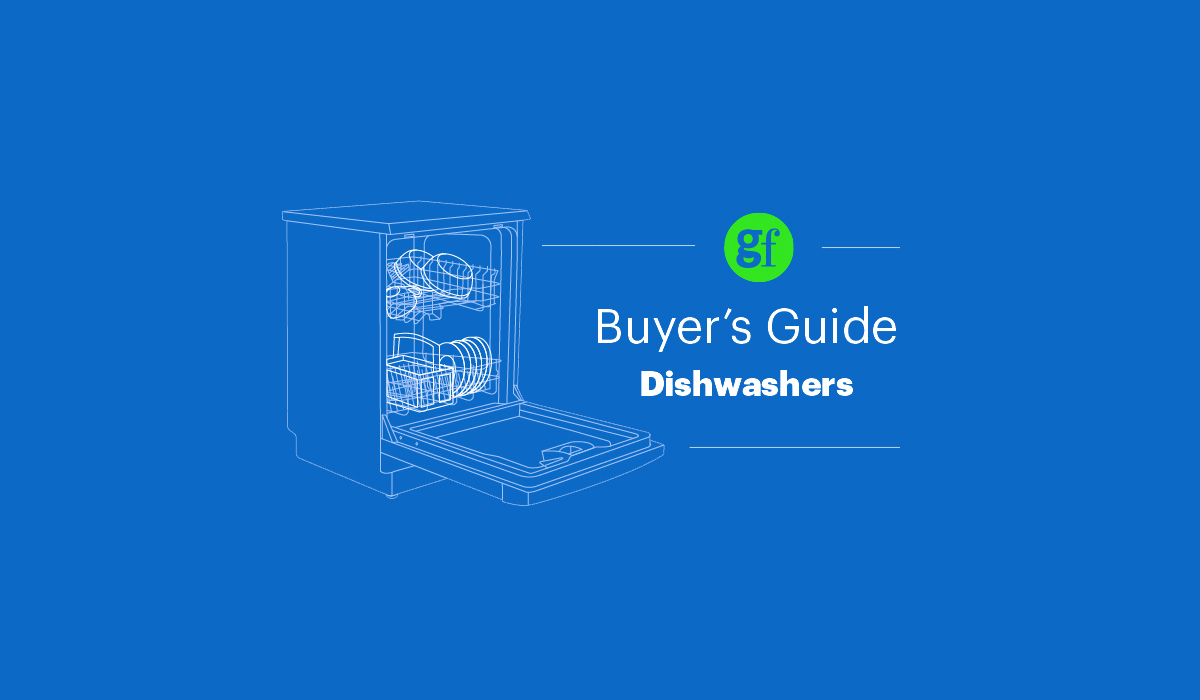

Best dishwasher buying guide: top brands and models
By ANYA GILBERT for BBC GOOD FOOD MAGAZINE
Discover some of the best dishwasher brands, and find the right dishwasher for your household and budget, with the BBC Good Food dishwasher buying guide.
Buying a dishwasher is a large financial commitment that, when made well, will save you time, effort and money by cutting the cost of your annual energy bills.
According to the Energy Saving Trust, the average UK home uses nearly 350 litres of water every day, and washing the dishes accounts for around 5% of domestic water use.
Dishwashers can be an all-round more efficient way of cleaning dishes and, importantly, allow you to spend less time at the sink in rubber gloves.
In 2020, we surveyed more than 1,000 households to find out what dishwashers people currently own, why they chose them, what features they find most useful and whether they would buy them again. But a lot has happened since that survey.
COVID-19 saw households spending more time indoors than before, which likely impacted usage habits of home appliances. March 2021 also brought with it a change in EU legislation around the energy rating classification of select white goods, just as Brexit took effect. The UK has adopted the new system which saw the previous A+++ ranges scraped in favour of a simpler A-G for now, but may go further in the future.
To help you navigate making such an investment purchase, we’ve spoken to domestic white goods experts from Quiet Mark, AO.com and Appliances Direct, independent advisors from UK Whitegoods and whitegoodshelp.co.uk along with specialists from Glotech Repairs and Pimlico Plumbers, to bring you trusted advice and recommended dishwasher suggestions, and help you make an informed decision about what dishwasher to spend your money on.
Discover some of the best dishwasher brands and find the right dishwasher for your household and budget, with the BBC Good Food dishwasher buying guide.
Dishwasher buyer’s guide: BBC Good Food Survey of the best dishwasher brands
In 2020, we rallied the BBC Good Food community with a survey distributed across our website, newsletter and social media channels to establish your favourite dishwasher brands, usage and purchase drivers, and received 1,264 responses.
BBC Good Food dishwasher survey: key findings
80% of BBC Good Food’s online audience own a dishwasher, 51% of whom said they use it about once a day. A very small minority said they use it once a week or less often (5%). 63% of respondents have owned their dishwasher for over three years and 12% have used theirs for 10 years or more.
When choosing a dishwasher, the top two most important factors by a clear margin are value for money and high energy rating. Water usage and product guarantee were the next important factors in people’s decision making.
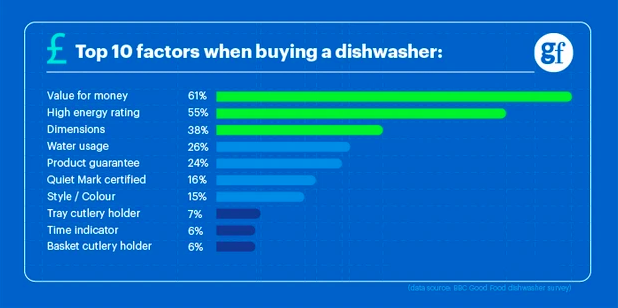
People valued the brand’s legacy in their selection criteria. 29% of recipients chose their brand based on it being known for quality – playing an even more important role than whether the machine was the best fit for the kitchen/washing area or its reviews.
Responses also suggest that people are more open to paying for a high-quality dishwasher from a reputable brand than they were concerned about whether the brand was cheap.
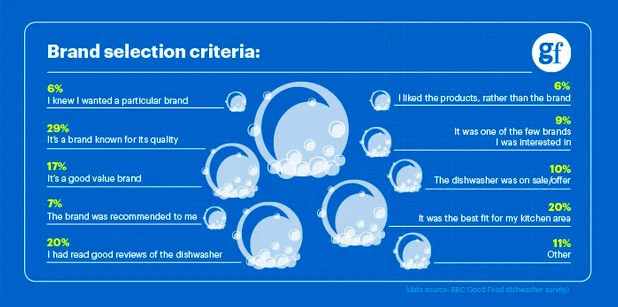
When it comes to choosing a dishwasher, Lauren Clark, Trading Director of AO.com says to carefully consider what features are important to your household, such as:
- What energy efficiency you’d prefer
- How many table settings you’ll need it to wash
- How flexible you need the shelving to be
‘Some dishwashers are more adaptable for switching between stacking pots and pans, and lots of glassware.
‘We’re looking at all the same features as the buyer at home when choosing which dishwashers to stock at AO.com.’ The following are also factors to consider:
- The quality of the appliance
- How much energy it uses
- How easy it is to use
- How good it looks in the kitchen’
What type of dishwasher do I need?
Depending on the design of your kitchen, dishwashers can be installed differently to best fit the space available. There are three main types:
Integrated: integrated dishwashers sit under your kitchen counters and are entirely hidden by a furniture door that matches the rest of your kitchen.
Semi-integrated: the dishwasher is also placed under a countertop but the machine’s panel and door is on show.
Freestanding: these can stand alone wherever you place them and are finished on all sides.
What dishwasher features and programs should I look for?
Andy Trigg, director of whitegoodshelp.co.uk with 44 years in the white goods and domestic appliance industry, shares his recommendations of features to look out for when buying a new dishwasher.
- Place settings: this should be prominently mentioned in the dishwasher’s specs. Capacities range from 12 place settings up to 16 on a full-size dishwasher. The place settings calculation should be around 10 items per person, including cutlery.
- Anti-flood protection: a dishwasher with anti-flood protection should detect leaks, drain out the water and shut off before any major damage is done.
- Child lock: with all dishwashers, as soon as the door is pulled open the dishwasher stops working. You can usually just see the spray arms slowly come to a halt. However, the dishwasher could potentially be full of very hot water, plus there is access to sharp knives. So, it might be desirable to have a dishwasher with a child lock system.
- Adjustable top rack: some top racks move up and down to accommodate extra large dishes or pans.
- Hot fill option: some dishwashers can be connected to the hot water supply instead of cold. This may or may not be something that you are aware of as a possibility. Dishwashers are normally plumbed in with only a cold water supply, so if you wanted to use hot water instead you would need to have extra plumbing fitted.
- Quiet Mark symbol: if a dishwasher is advertised and promoted as being quiet, then it should be fairly safe to rely on that.
- Eco setting: a longer wash cycle that uses less energy.
- Auto wash: sensors that can detect how clean or dirty the water is and adjust the wash cycle accordingly.
- Time remaining display: while not always 100% accurate, they do usually give a reasonable estimate of the time remaining. It’s extremely useful if you don’t want to leave a dishwasher running when leaving the house or going to bed (never leave a dishwasher running when no one is around).
What you should know about your appliances post-Brexit
Legislation by both the UK Government and the European Commission dictates that all dishwashers sold in the UK and EU must have a label showing their energy efficiency rating.
As of March 2021, the former classification system of some large white goods from A+++ (most efficient) to G (least efficient) was dropped in favour of a simpler of A-G grading system, thereby making room for brands to make technological improvements around sustainability at the top.
As a result, many dishwashers which previously boasted A+++ ratings now loiter around the C-E area; a move that’s hoped will re-ignite competition between manufacturers when it comes to sustainability.
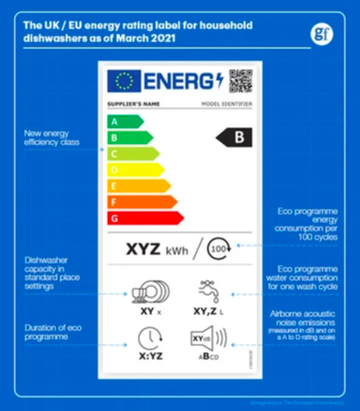
The new energy class system on these labels take into account the following information:
- Energy consumption of an eco wash
- Power consumption when the dishwasher is not switched on
- Power consumption when in standby mode
- Standby mode duration
- Capacity of the dishwasher
- Programme type
Insights on the machine’s noise emissions, drying performance and water consumption per standard cycle should also be included, according to UK legislation. This new label focuses on the eco functions of each dishwasher which generally have longer duration times, but should be more efficient.
In terms of Brexit’s impact on white goods in the UK, ‘much has yet to be seen’, says UK White Goods’ Kenneth Watt. ‘Spares can be an issue and things are slower into the UK. Prices are up due to Brexit and the pandemic, raw material shortages and so forth, so it’s hard to unpick what’s the fault of what for now.’
Which is cheaper – washing-up or using a dishwasher?
‘Modern, energy-efficient dishwashers are a great way to save water usage in your home,’ says Lauren Clark of AO.com. ‘It’s a common myth that they use more water than hand-washing, and the higher temperatures used means that they are also far more effective at killing bacteria.’
Using data by Carbon Footprint, Peter Earl of Compare the Market presents the average yearly running cost of a 1.44kWh dishwasher against those of other energy-guzzling household appliances.
Costing £19.44, the dishwasher sits just in front of a kettle at £16.90 and behind an electric oven at £21.08.
‘On average,’ writes Earl, ‘the majority of modern dishwashers use 11-13 litres of water per cycle. Hand-washing, on the other hand, can call for up to nine times that amount.’
Small actions like fully loading your dishwasher before turning it on and scraping excess food from your plates will help improve the efficiency of your dishwasher’s water and energy consumption.
How much water does a dishwasher use?
Our survey revealed that a dishwasher’s water consumption was a top-five deciding factor for participants when it came to buying their dishwasher. Andy Trigg shares a simple rule of thumb to follow.
‘Dishwashers with the highest energy ratings tend to use the least water. This is likely to be because a dishwasher using less water will also use less energy to heat up.’
‘The annual water consumption quoted for dishwashers is based on 280 wash cycles a year,’ Trigg tells us. ‘That works out as 5.38 wash cycles per week. So if you use your dishwasher more or less than that, your costs will vary accordingly.’
Having checked the annual water consumption figures of 50 dishwashers from various brands with a range of place settings, Trigg found that the amount of water used by a dishwasher doesn’t always correlate to its capacity. He recommends, instead, using the energy rating as a more accurate guide of a dishwasher’s water efficiency.
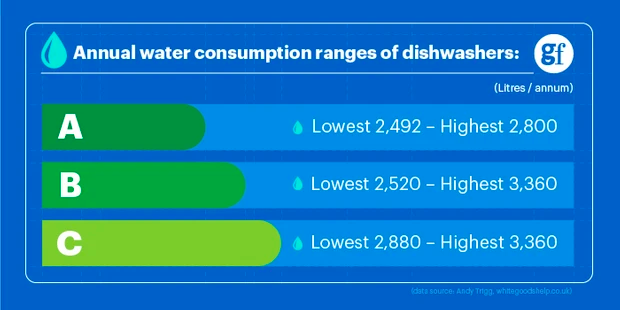
Annual water consumption of a dishwasher:
A: lowest 2,492 litres – highest 2,800 litres
B: lowest 2,520 litres – highest 3,360 litres
C: lowest 2,880 litres – highest 3,360 litres
How do you know if your dishwasher is quiet?
A noisy dishwasher could become quite intrusive if, for example, you have an open plan kitchen/living area. You will find details of a machine’s airborne acoustic noise emissions rating and class on the machine’s energy label in dB(A).
“The new energy label has not changed the noise assessment of appliances,” says Simon Gosling, CMO at at Quiet Mark. “Along with the decibel level, it now shows an A-D rating, with models in ‘A’ being amongst the quietest and ‘D’ being some of the loudest, but this compares all dishwashers together. At Quiet Mark we compare freestanding models separately from built-in models to ensure we can certify the quietest in each category.”
An independent scheme, Quiet Mark tests dishwashers every year to certify the quietest 10-20% across sub-categories and re-evaluates them annually to reflect and include the advances in performance of new models coming onto the market.
“The dB sound output from dishwasher models currently on the market this year range between 39dB right up to 54dB,” says Gosling. “The difference of 15dB may not look much on paper but as the decibel scale is logarithmic, 10dB is a doubling of the subjective volume, so this means the models at the louder end of the scale would sound more than twice as loud at the quietest ones”
The following noise emission classes relate to the decibels generated during the average wash cycle.
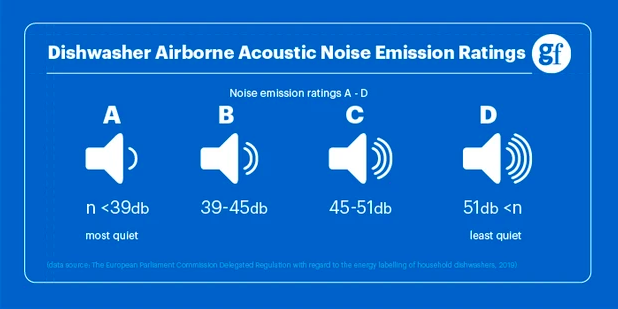
Dishwasher noise emission rating data*:
A: n<39
B: 39 – 45
C: 45 – 51
D: 51<n
*data taken from the European Parliament Commission Delegated Regulation with regard to the energy labelling of household dishwashers, 2019.
Cutlery tray vs. cutlery basket?
It’s common for dishwashers to have small cutlery baskets that sit in the bottom layer during washes. Others have a slim tray that pulls out like a drawer and sits right at the top of the machine for laying cutlery down in.
Cutlery trays allow for extra washing room between each piece and offer more flexibility for utensils such as spatulas, tongs and sharp knives to also be washed safely. Sometimes, large dishwashers have both. A separate cutlery tray leaves you with additional room for plates in the lowest dishwasher rack.
What is a smart dishwasher?
Smart dishwashers connect via WiFi to an app on your phone, allowing you to control them remotely through that app. You no longer have to pay through the nose for them but Andy Trigg suggests approaching these with an air of caution.
‘Think carefully before paying extra for smart features,’ says Trigg. ‘You should never run a dishwasher when no one is present in the house. They are a potential fire risk. If you can see that there are genuinely useful (and not just novel) functions on a smart dishwasher then you will no doubt be happy to pay extra for one.’
What size dishwasher do I need?
A dishwasher’s size comes down to two factors: its physical dimensions and the number of items or place settings it can hold. Measure the space you have available for a dishwasher and compare that to the standard dimensions of these three common types.
Recommended dishwasher dimensions:
Full-size: 120-150 items / 60cm wide / 4+ people
Slimline: 90-100 items / 45cm wide / 2-4 people
Compact: 40-60 items / 55cm wide / 2 people
The best dishwasher brands
Our survey of over 1,000 BBC Good Food readers revealed that Bosch was by far the most popular dishwasher brand, with a quarter of BBC Good Food’s online audience owning one by the brand.
Nine in 10 said they would also buy the dishwasher again (4% said they would not). The next most popular dishwasher brands were Beko and Hotpoint, with 9% and 8% respectively owning their dishwashers.
Using the results of this survey, suggested models from Quiet Mark Technical Manager, Richard Wilkinson, AO trading director, Lauren Clark, Currys PC World white goods specialist, Karl Beasant, and advice from Kenneth Watt of UK White Goods, we bring you a selection of highly rated dishwasher models from top brands to consider for your household.
Best dishwashers at a glance
- Best dishwasher for medium families: Samsung Series 6 Standard dishwasher DW60M6050FW, £479
- Recommended dishwasher for medium families: Samsung DW60M6050FW, £449.99
- Best freestanding dishwasher: Miele G 7312 SC AutoDos, £1160
- Best semi-integrated dishwasher: Fisher & Paykel DD60DDFHX9 DishDrawer dishwasher, £1200
Best dishwashers to buy in 2021
Best for medium families: Samsung Series 6 freestanding standard dishwasher DW60M6050FW | E
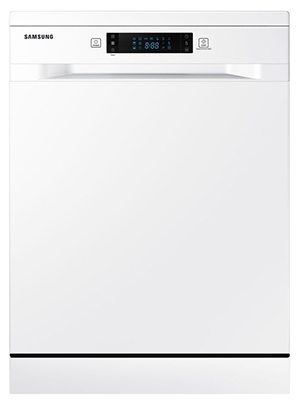
Top features:
- 14 place settings
- Cutlery tray
- Two-year manufacturer guarantee
- Wide LED display
Cycle options: Seven
This is a great option for medium households wanting the flexibility to do a half-load clean or 30-minute quick wash for convenience, but also the option to blast plates with a hotter wash. The hygiene programme finishes with a final 10-minute rinse at 70°C to offer extra peace of mind over any lurking nasties on cutlery, dishes and cooking utensils.
The interior space is flexible, with the upper rack adjustable by 5cm for accommodating plates and pans of varying sizes in the lower section. A cutlery tray features at the top of the machine. We particularly love the broad LED digital display and the fact it’s backed by a two-year Samsung warranty.
Best freestanding dishwasher: Miele G 7312 SC AutoDos | C
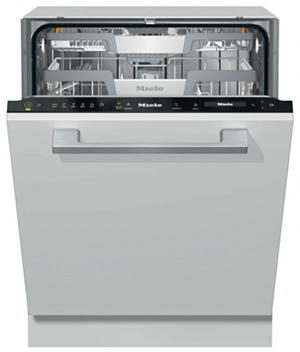
Top features:
- 14 place settings
- AutoDos dispensing
- 3D MultiFlex tray for loading
- Flexline baskets
- Quiet Mark Certified
Cycle options: 10
This Miele features the brand’s AutoDos technology designed to improve the efficiency of its wash cycles without wasting detergent. This is a sophisticated bit of kit, equipped with WiFi compatibility and the option to connect it to smart home devices like Amazon Alexa for voice-activated programme starts.
Three particular features make it stand out. First is the option to reduce the overall wash time of each program using the Express feature if you’re in a hurry. Next is the chance to add extra cleaning power when needed within the IntenseZone.
Finally is the Quiet Mark certification, which puts it in the top 10-20% of its category for boasting the lowest noise emissions during its cycles – particularly useful for open-plan kitchen and living spaces, or if planning to run it overnight.
Best semi-integrated dishwasher: Fisher & Paykel DD60DDFHX9 DishDraw dishwasher | E
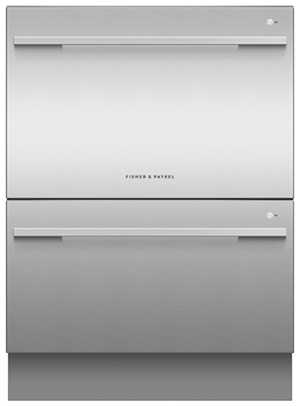
Top features:
- 12 place settings
- Dual drawer design
- Child lock
- Flexible racking for fitting larger dishes
- Independent drawer usage
- Quiet Mark Certified
Cycle options: Six
Love them or hate them, drawer dishwashers give you the option to set one half running while you load the other and choose a different wash cycle for each half depending on the contents. Grimy dishes in one, delicate glassware in another.
Quiet Mark certified, this model by Fisher & Paykel runs at a 45dBA level to ensure its functions don’t disturb what’s going on in the kitchen.
Capacity-wise, it’s much smaller than your average machine: offering space to wash six place settings at a time, making it best suited for smaller households. Each drawer contains a cutlery basket and has a handy child lock in case of curious cupboard openers.
Read the original article on the BBC Good Food website here.

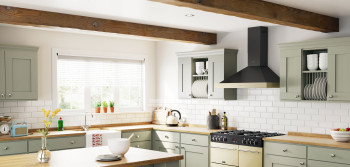
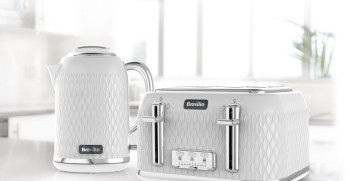




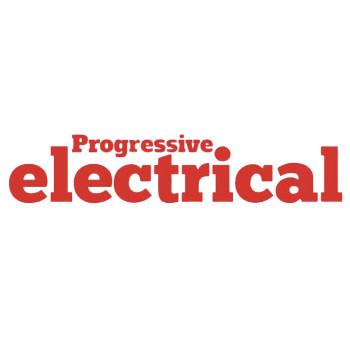




 Quiet Mark Founder
Quiet Mark Founder